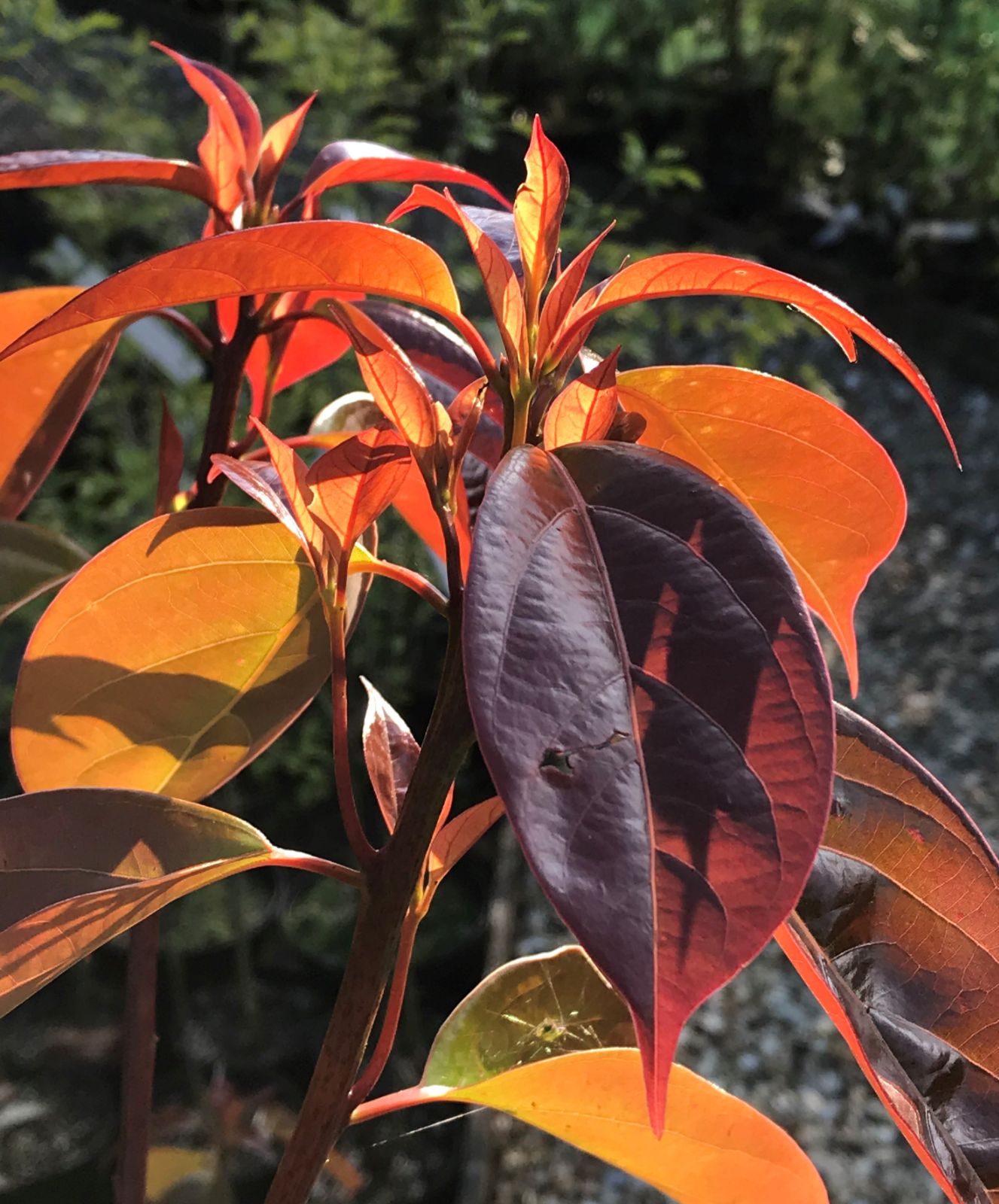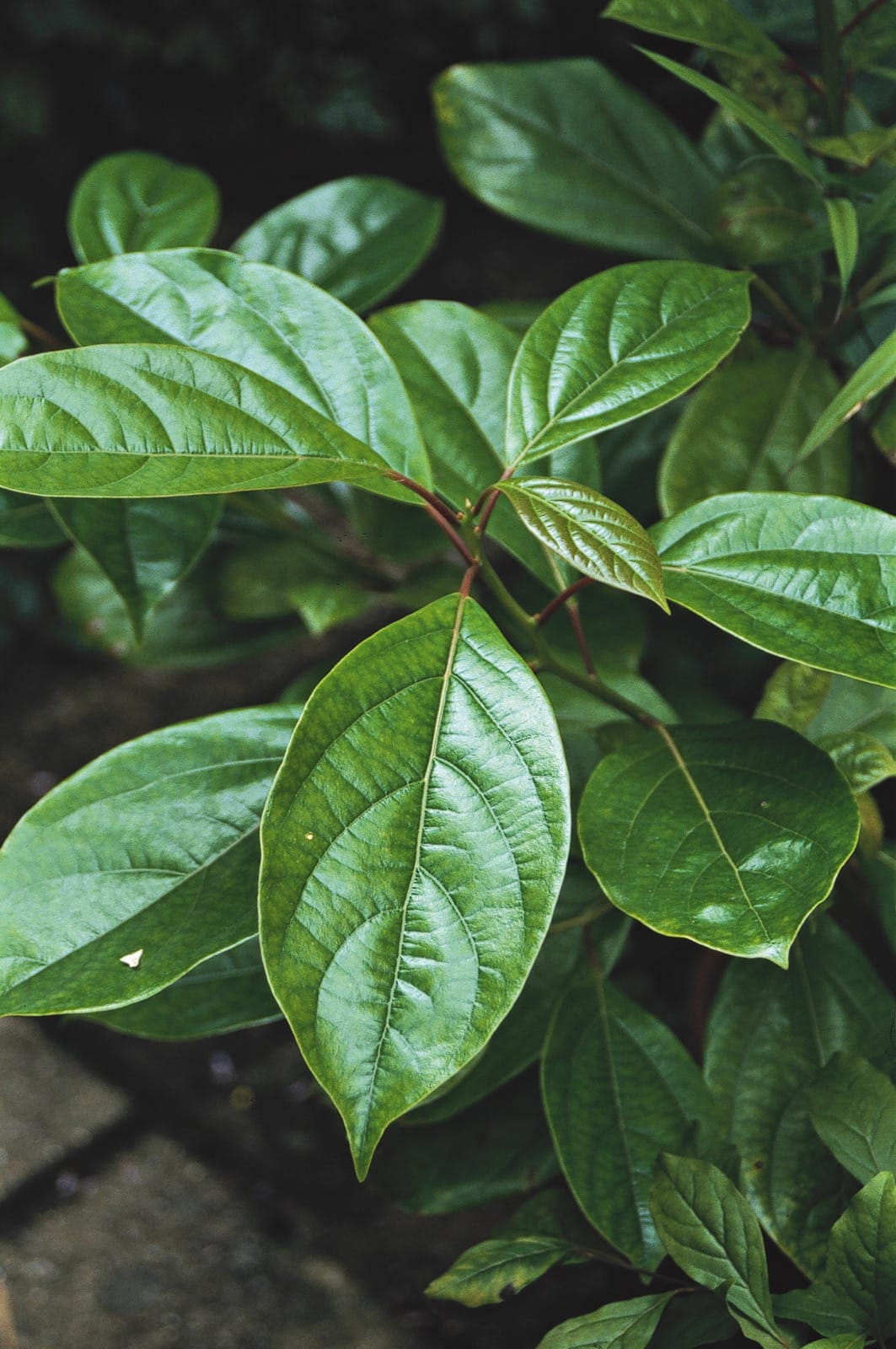Nothaphoebe cavaleriei
Credits
Article from New Trees by John Grimshaw & Ross Bayton
Recommended citation
'Nothaphoebe cavaleriei' from the website Trees and Shrubs Online (treesandshrubsonline.
Genus
Other taxa in genus
Tree 3–7(–13) m or more. Bark reddish brown with longitudinal striations, forming small flakes at the base. Branches remaining green-barked. Branchlets glabrous, yellowish brown with dense oblong lenticels. Leaves evergreen, alternate, 10–18 × 2.5–5 cm, leathery, oblanceolate to obovate, upper surface dark green and glabrous, lower surface greenish white with tiny hairs (only visible under magnification) and a prominent elevated midrib, 8–12 secondary veins on each side of the midrib, margins entire, apex short-acuminate; petiole 1.5–2 cm long, glabrous. Inflorescence axillary, paniculate, lax, 9–16 cm long. Flowers yellow or yellowish white, about 0.3 cm long with a short, six-lobed perianth tube; outer three tepals half as long as the inner three, all tepals sparsely pubescent on the outside and densely villous inside; stamens nine, inner three with short-stalked reniform glands near the base. Fruit globose, 1.2–1.4 cm diameter with persistent tepals at the base. Flowering May to July, fruiting August to September (China). Li et al. 2005. Distribution CHINA: Guizhou, Sichuan, Yunnan. Habitat Montane forest margins between 500 and 1900 m asl. USDA Hardiness Zone 8. Conservation status Not evaluated. Illustration NTxiii, NT528.
Nothaphoebe cavaleriei is one of the most beautiful of broadleaved evergreen trees, but sadly (and curiously) scarce in cultivation, although commercially available in the United States. A tree of 15 m with 22 cm dbh, forming a good conical shape, was one of the glories of Heronswood, and there is a fine tree in Aiken, South Carolina (T. Lasseigne, pers. comm. 2007). In the United Kingdom a striking specimen grows in Roy Lancaster’s garden, reaching 6 m since 1996 and described by him as ‘A most handsome evergreen … much admired by visitors’ (R. Lancaster, pers. comm. 2006). These three are all the same clone, propagated by cuttings from a tree raised from Index Seminum seed in the early 1990s in what was then the North Carolina State University Arboretum. Richard Olsen (pers. comm. 2007), an NCSU student at that time, recalls how excited J.C. Raulston was when it germinated and how keen he was to pass it around – hence the gifts to Dan Hinkley and Roy Lancaster – because he feared it would not grow in North Carolina. This pessimism was justified as the original plant was killed by its first winter outdoors (T. Lasseigne, pers. comm. 2007). The tree in Aiken, planted by Bob McCartney of Woodlanders Nursery, has reached about 6 m, but its top is frozen back at temperatures below –7 to –8 °C, suffering more damage than two species of Phoebe nearby (T. Lasseigne, pers. comm. 2007). The great beauty of this plant comes from its broad glossy dark green leaves, glaucous grey-white below, and conspicuously veined. They are pleasantly spicily scented when crushed.



